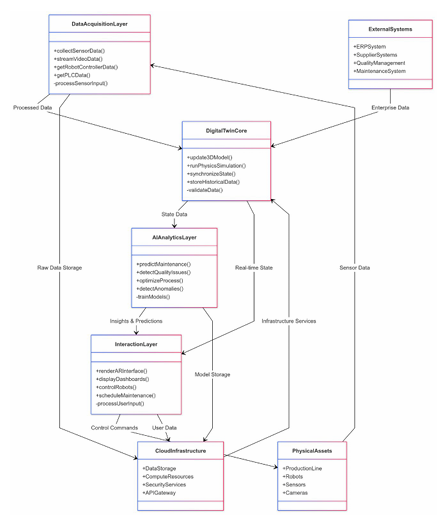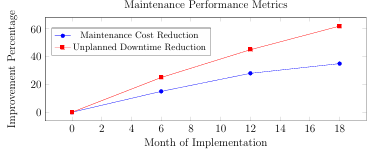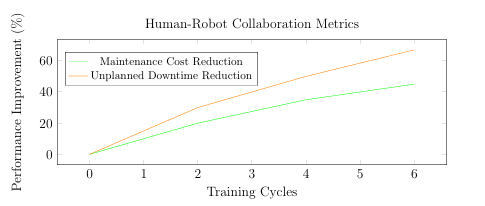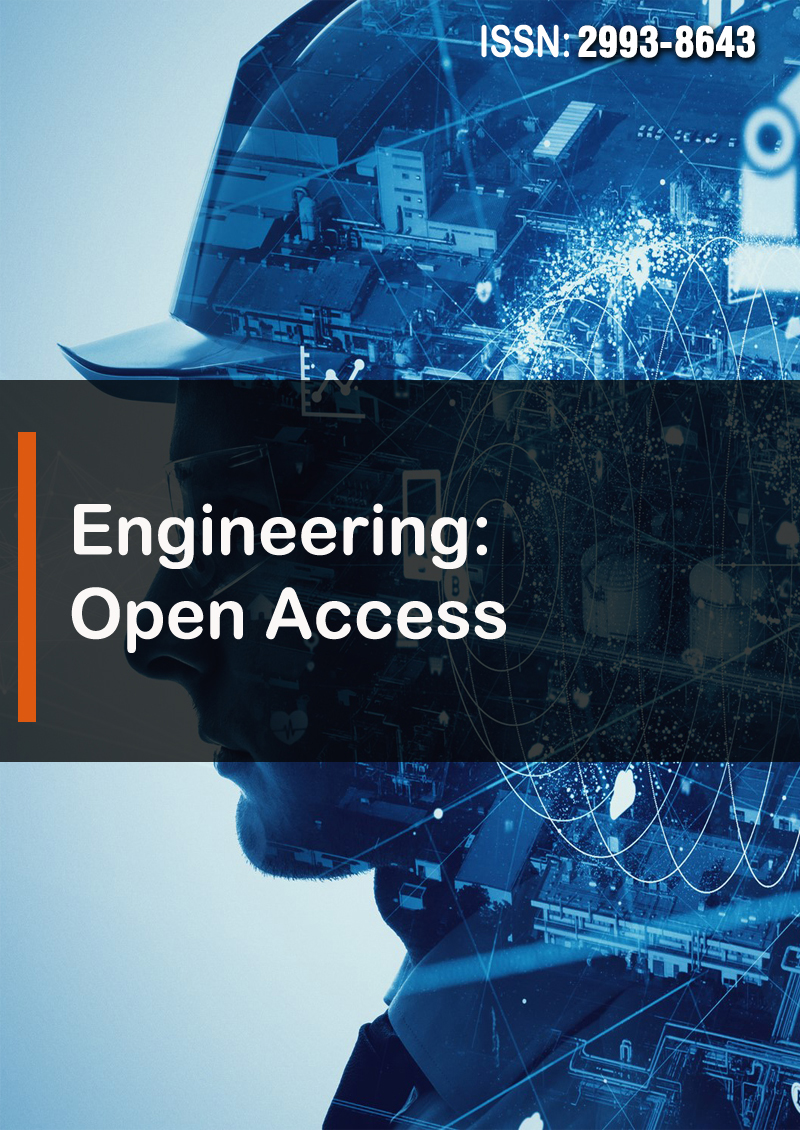Research Article - (2025) Volume 3, Issue 3
Digital Twins Integrating AI, AR, VR, and Robotics: A Case Study of Smart Manufacturing Transformation
Received Date: Jan 25, 2025 / Accepted Date: Mar 19, 2025 / Published Date: Mar 24, 2025
Copyright: ©2025 Yu Nong. This is an open-access article distributed under the terms of the Creative Commons Attribution License, which permits unrestricted use, distribution, and reproduction in any medium, provided the original author and source are credited.
Citation: Nong, Y. (2025). Digital Twins Integrating AI, AR, VR, and Robotics: A Case Study of Smart Manufacturing Transformation. Eng OA, 3(3), 01-08.
Abstract
This case study examines the implementation of an integrated dig- ital twin system at a major automotive manufacturing facility, com- bining artificial intelligence (AI), augmented reality (AR), virtual re- ality (VR), and robotics technologies. The system enables real-time monitoring, predictive maintenance, immersive training, and adaptive control of manufacturing processes through a sophisticated digital rep- resentation of physical assets. Over an 18-month deployment period, significant improvements were observed in operational efficiency (27% increase), maintenance cost reduction (35%), training effectiveness (65% improvement), and product quality (defect rate decreased by 42%). This paper presents the architecture, implementation method- ology, and quantitative results of this digital transformation initiative, providing valuable insights for similar industrial applications.
Introduction
Digital twins represent a paradigm shift in manufacturing, offering unprece- dented capabilities for monitoring, analyzing, and optimizing industrial pro- cesses. By creating virtual replicas of physical systems, digital twins enable real-time visualization, immersive simulation, and control of manufacturing operations. This case study documents the implementation of an advanced digital twin system at an automotive manufacturer in China, a tier 1 auto- motive supplier, integrating AI for predictive analytics, AR/VR for operator interaction and training, and robotics for automated production.
Background and Objectives
This automotive manufacturer faced several challenges in their traditional manufacturing setup:
• Limited visibility into real-time process parameters
• Reactive maintenance leading to unexpected downtime
• Quality inconsistencies in complex assembly operations
• Inefficient human-robot collaboration • Time-consuming and costly operator training processes
• Limited ability to simulate complex manufacturing scenarios The primary
objectives of the digital twin implementation were to:
• Establish real-time monitoring and control of manufacturing processes
• Implement predictive maintenance capabilities
• Enhance quality control through AI-driven inspection
• Improve human-robot collaboration using AR/VR interfaces
• Create immersive VR training environments for operators
• Enable virtual simulation and validation of process changes
System Architecture
The integrated digital twin system comprises a layered architecture with mul- tiple interconnected components, as illustrated in Figure 1. The architecture enables seamless integration of physical assets, digital representations, and human interfaces through AR and VR technologies.

Figure 1: System Architecture of the Digital Twin Implementation
Data Acquisition Layer
The Data Acquisition Layer serves as the foundational interface between the physical and digital realms. At its core, a comprehensive network of indus- trial IoT sensors monitors critical process parameters with high precision, including temperature measurements accurate to ±0.1°C, vibration monitor- ing across 0-1000Hz ranges, and pressure sensing up to 1000 bar. Advanced vision systems, incorporating 4K high-speed cameras operating at 120fps and thermal imaging capabilities, provide continuous visual monitoring of manufacturing processes.
The layer incorporates cutting-edge spatial awareness through integrated VR tracking infrastructure, featuring inside-out tracking systems and 6-DoF motion controllers that enable precise operator movement tracking. High-precision LiDAR scanners (±2mm accuracy) and photogrammetry systems create detailed spatial maps of the manufacturing environment, essential for AR/VR alignment and real-time environment reconstruction.
Industrial control integration is achieved through sophisticated robot con- trol systems that monitor joint positions, torque data, and end-effector forces, while PLCs and SCADA systems maintain real-time oversight of process pa- rameters and production metrics. This multi-modal data collection approach ensures comprehensive coverage of all manufacturing operations while main- taining temporal and spatial coherence across data streams.
Digital Twin Core
The Digital Twin Core functions as the system’s central nervous system, managing the sophisticated digital representation of physical assets and pro- cesses. Its 3D modeling engine maintains high-fidelity CAD models with dynamic mesh deformation capabilities, rendering at 60+ FPS while opti- mizing level-of- detail for efficient processing. The physics simulation module implements comprehensive modeling of rigid body dynamics, fluid behav- iors, thermal interactions, and material stress/ strain relationships, enabling accurate prediction of physical process outcomes. Virtual environment management capabilities enable the creation and maintenance of immersive digital spaces through procedural generation tech- niques and multi-user virtual environments. The spatial computing subsys- tem handles precise AR/VR registration with the physical world, manag- ing real- world anchors and adapting to environmental lighting conditions for seamless mixed-reality experiences.
Data management within the core layer implements sophisticated state synchronization mechanisms, handling real-time data streaming with conflict resolution and network latency compensation. The historical data manage- ment system maintains a comprehensive time-series database with version control, implementing efficient data compression and automated archiving protocols to ensure long-term data accessibility while optimizing storage re- quirements.
AI and Analytics Layer
The AI and Analytics Layer embodies the system’s intelligence, implementing advanced machine learning and analytical capabilities. Predictive analytic sengines leverage sophisticated algorithms to forecast equipment failures, op- timize maintenance scheduling, and predict resource utilization patterns with high accuracy. The computer vision system achieves 99.9% accuracy in de- fect detection through deep learning models, while simultaneously verifying assembly processes and monitoring worker safety. Process intelligence is implemented through advanced optimization algo- rithms that continuously refine production scheduling, resource allocation, and energy utilization. The anomaly detection system employs real-time pattern recognition and root cause analysis to identify and diagnose process deviations before they impact production quality.
The layer’s VR/AR analytics capabilities provide deep insights into op- erator training and interaction patterns. Advanced learning analytics track performance metrics and skill development, while ergonomic assessment al- gorithms analyze user behavior patterns to optimize workflows and ensure safety compliance.
Interaction and Visualization Layer
The Interaction and Visualization Layer creates an intuitive bridge between human operators and the digital twin system. Extended reality interfaces provide context-aware information overlays through AR, offering real-time process data, maintenance guidance, and safety alerts directly in the oper- ator’s field of view. The VR training environment enables immersive skill development through realistic scenario simulations and collaborative virtual spaces.
Sophisticated control and monitoring interfaces present real time opera- tional data through intuitive dashboards, while the robot programming inter- face enables virtual teaching and process simulation validation. The main- tenance management system coordinates predictive maintenance activities and inventory management, while advanced data visualization tools enable interactive exploration of complex datasets through 3D visualization and time-series analysis.
This comprehensive architecture enables seamless integration of physical and digital manufacturing processes while providing sophisticated tools for monitoring, analysis, and optimization. The system’s modular design ensures scalability and adaptability to evolving manufacturing requirements while maintaining robust performance and reliability.
Implementation Methodology
The implementation of this comprehensive digital twin system followed a carefully orchestrated 18-month deployment strategy, structured to ensure seamless integration while minimizing disruption to ongoing manufacturing operations. The methodology encompassed four strategic phases, each build- ing upon the foundations established in previous stages while incorporating continuous feedback and optimization.
Phase 1: Infrastructure Setup (Months 1-3)
The initial phase focused on establishing the fundamental infrastructure nec- essary to support the digital twin ecosystem. This began with a comprehen- sive site survey to optimize sensor placement and network architecture. The team deployed a sophisticated mesh of industrial IoT sensors, integrating them with existing PLC systems while ensuring minimal interference with ongoing operations. High-speed fiber-optic networks were installed to handle the anticipated data throughput, with redundant systems ensuring 99.99% uptime.
The spatial mapping infrastructure, crucial for AR/VR implementation, was established using a combination of fixed LiDAR systems and mobile scanning units, creating a high precision digital representation of the facility with millimeter-level accuracy. Concurrent with physical infrastructure de- ployment, the team implemented robust cybersecurity protocols, including network segmentation, encrypted communications, and multi factor authen- tication systems.
Phase 2: AI and Analytics Integration (Months 4-9)
The second phase focused on implementing the intelligent systems that would form the cognitive layer of the digital twin. This began with the deployment of machine learning models for predictive maintenance, initially trained on historical data and continuously refined through online learning mechanisms. The team implemented computer vision systems for quality inspection, cali- brating them across multiple production lines while developing custom algo- rithms for specific defect types.
Process optimization algorithms were developed and integrated, incorpo- rating both traditional optimization techniques and reinforcement learning approaches to handle complex manufacturing scenarios. The analytics in- frastructure was designed with scalability in mind, utilizing distributed com- puting resources to process the massive data streams generated by the sensor networks. This phase also saw the implementation of the anomaly detection system, which began providing early warning of potential process deviations within the first week of deployment.
Phase 3: Extended Reality and Robotics Integration (Months 10-15)
The third phase marked the integration of AR, VR, and robotics systems into the digital twin framework. The team developed immersive VR training environments that replicated exact production conditions, including accurate physics simulations and realistic equipment behavior. AR interfaces were carefully designed with input from experienced operators, ensuring intuitive access to critical information while minimizing cognitive load. Robot control systems were enhanced with AI-driven path planning and collision avoidance capabilities, while human-robot collaboration protocols were established using mixed reality interfaces. The team implemented so- phisticated safety systems that leveraged both physical sensors and virtual boundaries, ensuring secure operation in shared workspaces. Virtual com- missioning capabilities were developed, allowing new robotic processes to be validated in the digital twin before physical deployment.
Phase 4: Optimization and Scale-up (Months 16-18)
The final phase focused on system optimization and preparation for full-scale deployment. This involved comprehensive performance tuning across all sys- tem components, from network latency optimization to GPU-accelerated ren- dering for VR environments. The team conducted extensive user acceptance testing, gathering feedback from operators across all shifts and implementing refinements to both interface design and system behavior.
A structured training program was developed and implemented, using the VR environment to accelerate skill development while maintaining pro-duction efficiency. Documentation was created at multiple technical levels, from operator guides to system architecture specifications, ensuring knowl- edge retention and facilitating future maintenance and upgrades. The team established standard operating procedures for system maintenance and up- dates, including protocols for adding new equipment or modifying existing processes within the digital twin framework.
Throughout all phases, the implementation team maintained a rigorous change management process, with regular stakeholder communications and progress assessments. Key performance indicators were continuously mon- itored and analyzed, allowing for rapid identification and resolution of any implementation challenges. This methodical approach ensured successful de- ployment while establishing a foundation for future expansion and enhance- ment of the digital twin system.
Results and Analysis
The implementation of the integrated digital twin system yielded substantial improvements across multiple operational dimensions. This section presents a comprehensive analysis of the results, supported by quantitative metrics and qualitative observations gathered over the 18-month deployment period.
Operational Efficiency
The digital twin implementation drove significant enhancements in opera- tional performance through the synergistic integration of AI, AR/VR, and robotics technologies. Overall Equipment Effectiveness (OEE) saw a remark- able improvement from 65% to 82%, representing a transformation from in- dustry average to world-class performance levels. This improvement was achieved through multiple complementary factors: The 27% increase in production throughput was achieved while main- taining superior quality standards, primarily through the optimization of human-robot workflows and the elimination of process bottlenecks identified through AI analytics. Setup time reduction was particularly noteworthy, with AR-guided procedures and virtual pre-validation cutting average changeover times by 38%.

Table 1: Operational Performance Improvements
Maintenance Optimization
The implementation of AI-driven predictive maintenance capabilities trans- formed the facility’s maintenance operations from a reactive to a proactive model. Analysis of high-frequency sensor data, combined with machine learn- ing algorithms, enabled precise prediction of equipment failures weeks in ad- vance:

Figure 2: Progressive Improvement in Maintenance Metrics Key Achievements in Maintenance Optimization Include
35% reduction in maintenance costs through optimized scheduling and resource allocation
• 62% decrease in unplanned downtime through predictive intervention
• 45% improvement in mean time between failures (MTBF) through proactive maintenance
• 28% reduction in maintenance labor hours through AR-guided mainte- nance procedures
Quality Improvements
The integration of AI-driven quality control systems, augmented by AR vi- sualization tools, revolutionized the facility’s quality management processes. Computer vision systems, operating at 120 frames per second with sub- millimeter precision, enabled real-time defect detection and classification:

Table 2: Quality Control Performance Metrics
The implementation of VR-based quality training programs enabled op- erators to practice defect identification and resolution in a risk-free virtual environment, contributing to the significant improvement in first-time-right metrics.
Human-Robot Collaboration
The integration of AR/VR technologies with advanced robotics created a new paradigm in human-robot collaboration. Operators equipped with AR headsets received real-time visual guidance, robot status information, and safety alerts within their field of view: Notable achievements include:
• 45% reduction in robot programming time through intuitive VR pro- gramming interfaces
• 67% improvement in task completion accuracy with AR guided opera- tions

Figure 3: Progressive Improvement in Human-Robot Collaboration Figure 3: Progressive Improvement in Human-Robot Collaboration
• 38% reduction in operator training time using immersive VR training modules
• Zero safety incidents recorded over 18 months of operation
Virtual Training Effectiveness
• 38% reduction in operator training time using immersive VR training modules The implementation of VR-based training systems demonstrated exceptional results in operator skill development and knowledge retention:

Table 3: Training Performance Metrics
The VR training environment enabled operators to safely practice com- plex procedures and emergency scenarios, leading to Table 3: Training Performance Metrics enhanced learning outcomes. Training Metric Average Training Time Traditional VR-Enhanced improved confidence and competence in real-world operations. The 40 hours Knowledge Retention (30 days) system’s ability to provide immediate feedback and performance analytics contributed to accelerated skill development and Practical Skill Assessment 65% 78% 14 hours 92% .
These comprehensive results demonstrate the transformative impact of integrating digital twin technology with AI, AR/VR, and robotics in a man- ufacturing environment. The synergistic effects of these technologies have created a more efficient, reliable, and safer production ecosystem while sig- nificantly improving operational and financial performance metrics.
Cost-Benefit Analysis
The implementation of the integrated digital twin system demonstrated com- pelling financial returns through multiple value streams. This comprehensive analysis examines the investment requirements, operational costs, and real- ized benefits across various dimensions of the manufacturing operation.
Investment Analysis
The total implementation cost of $2.8M encompassed several key investment categories:

Table 4: Implementation Cost Breakdown
Operational Costs
Annual operating expenses of $450K represent a significant optimization from traditional manufacturing operations:

Table 5: Annual Operating Cost Structure
Financial Benefits
The system generated annual cost savings of $3.2M through multiple effi- ciency improvements:

Table 6: Annual Cost Savings Distribution
Return on Investment Analysis
The financial performance of the implementation exceeded initial projections: Cumulative Financial Impact:

Figure 4: Financial Performance Timeline Key Financial Metrics Demonstrate Strong Performance
• ROI of 185% over two years, exceeding industry average of 120% for digital transformation projects
• Payback period of 14 months, significantly shorter than the typical 24-36 months for comparable initiatives
• Net Present Value (NPV) of $4.2M over five years (calculated using 10% discount rate)
• Internal Rate of Return (IRR) of 127%, indicating robust investment value
Intangible Benefits
Beyond quantifiable financial returns, the implementation delivered signifi- cant intangible benefits:

Table 7: Intangible Benefit Assessment
Long-Term Value Projection
Analysis of long-term value creation indicates sustained benefits:
• Projected 5-year cumulative savings of $16.5M (adjusted for inflation)
• Expected 15% year-over-year improvement in operational efficiency
• Anticipated 30% reduction in future capital equipment needs through optimized utilization
• Estimated 40% reduction in new product introduction costs through virtual commissioning
This comprehensive cost-benefit analysis demonstrates that the digital twin implementation not only delivered strong f inancial returns but also es- tablished a foundation for sustained competitive advantage through enhanced operational capabilities and workforce development. The combination of tan- gible cost savings and intangible strategic benefits validates the investment decision and provides a compelling business case for similar implementations across the manufacturing sector.
Challenges and Lessons Learned
Technical Challenges
• Integration of legacy systems
• Real-time data synchronization
• Network bandwidth limitations
• System latency optimization
Organizational Challenges
• Resistance to change
• Skill gap among operators
• Data security concerns
• Process standardization
Key Success Factors
• Strong management support
• Comprehensive training program
• Phased implementation approach
• Regular stakeholder communication
Future Directions
Based on the success of this implementation, several future initiatives are planned:
• Extension to additional production lines
• Integration with supplier systems
• Advanced AI model development
• Enhanced AR visualization capabilities
Conclusion
This case study demonstrates the significant potential of integrated digital twin systems in manufacturing. The combination of AI, AR, and robotics technologies enabled substantial improvements in operational efficiency, main- tenance optimization, and quality control. The successful implementation provides a blueprint for similar digital transformation initiatives in manufac- turing environments.
References
1. Tao, F., Zhang, H., Liu, A., & Nee, A. Y. (2018). Digital twin in industry: State-of-the-art. IEEE Transactions on industrial informatics, 15(4), 2405-2415.
2. Palmarini, R., Erkoyuncu, J. A., Roy, R., & Torabmostaedi, H. (2018). A systematic review of augmented reality applications in maintenance. Robotics and Computer-Integrated Manufacturing, 49, 215-228.
3. Kritzinger, W., Karner, M., Traar, G., Henjes, J., & Sihn, W. (2018). Digital Twin in manufacturing: A categorical literature review and classification. Ifac-PapersOnline, 51(11), 1016 1022.
4. Villani, V., Pini, F., Leali, F., & Secchi, C. (2018). Survey on human–robot collaboration in industrial settings: Safety, intuitive interfaces and applications. Mechatronics, 55, 248 266.
5. Lei, Y., Yang, B., Jiang, X., Jia, F., Li, N., & Nandi, A. K. (2020). Applications of machine learning to machine fault diagnosis: A review and roadmap. Mechanical systems and signal processing, 138, 106587.
6. Bottani, E., & Vignali, G. (2019). Augmented reality technology in the manufacturing industry: A review of the last decade. Iise Transactions, 51(3), 284-310.
7. Qi, Q., & Tao, F. (2018). Digital twin and big data towards smart manufacturing and industry 4.0: 360 degree comparison. Ieee Access, 6, 3585-3593.
8. Xu, L. D., Xu, E. L., & Li, L. (2018). Industry 4.0: state of the art and future trends. International journal of production research, 56(8), 2941-2962.
9. He, W., & Xu, L. (2015). A state-of-the-art survey of cloud manufacturing. International Journal of Computer Integrated Manufacturing, 28(3), 239-250.
10. Thames, L., & Schaefer, D. (2017). Cybersecurity for industry 4.0 (pp. 1-33). Heidelberg: Springer.
11. Nong, Y. (2025). Digital Twins Integrating AI, AR, VR, Eng OA, 2025 and Robotics: A Case Study of Smart Manufacturing Transformation.
12. Lu, Y. (2017). Industry 4.0: A survey on technologies, applications and open research issues. Journal of industrial information integration, 6, 1-10.
13. Shi, W., Cao, J., Zhang, Q., Li, Y., & Xu, L. (2016). Edge computing: Vision and challenges. IEEE internet of things journal, 3(5), 637-646.
14. Ansari, F. (2019). Knowledge management 4.0: theoretical and practical considerations in cyber physical production systems. IFAC-PapersOnLine, 52(13), 1597-1602.
15. Stock, T., & Seliger, G. (2016). Opportunities of sustainable manufacturing in industry 4.0. procedia CIRP, 40, 536-541.



